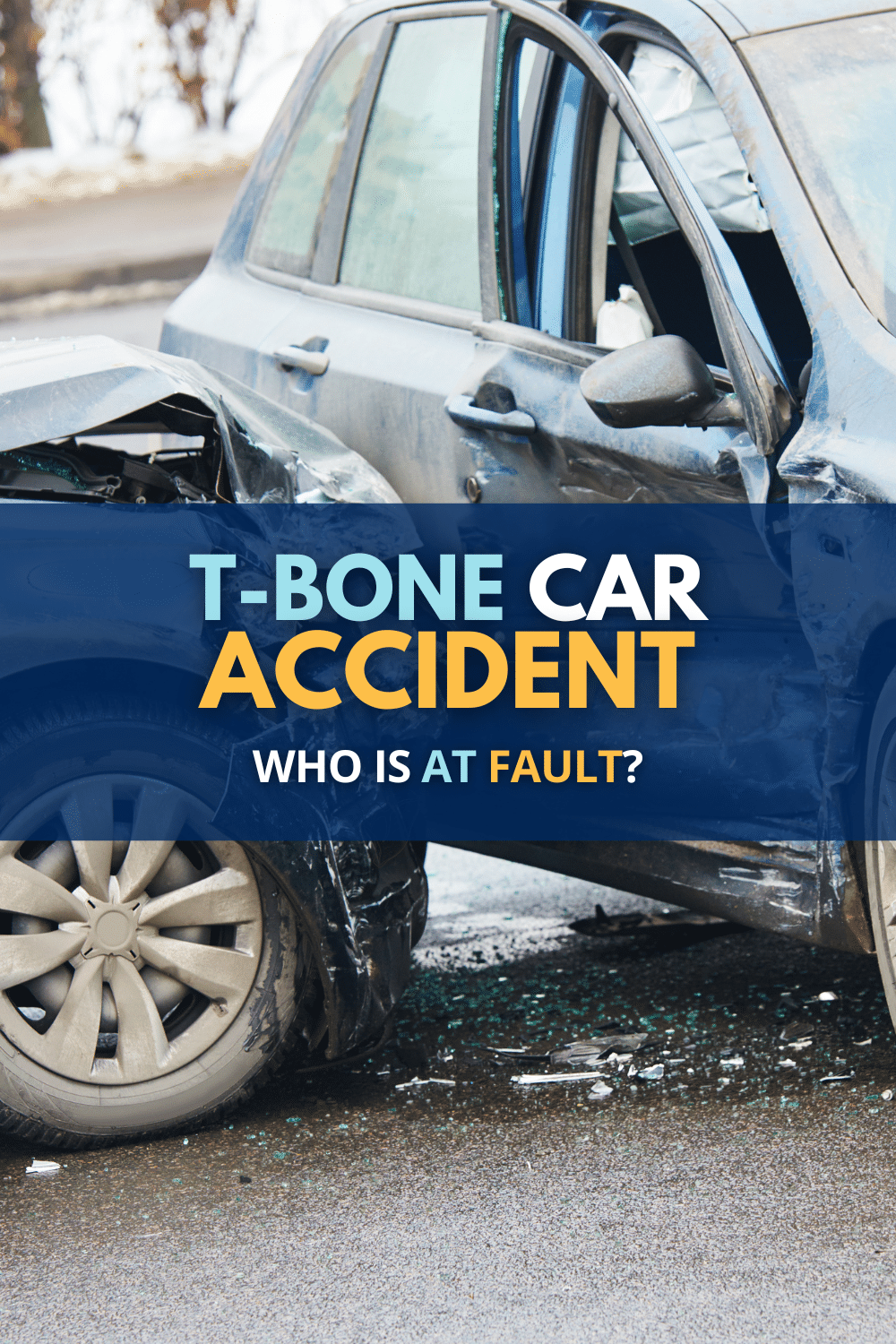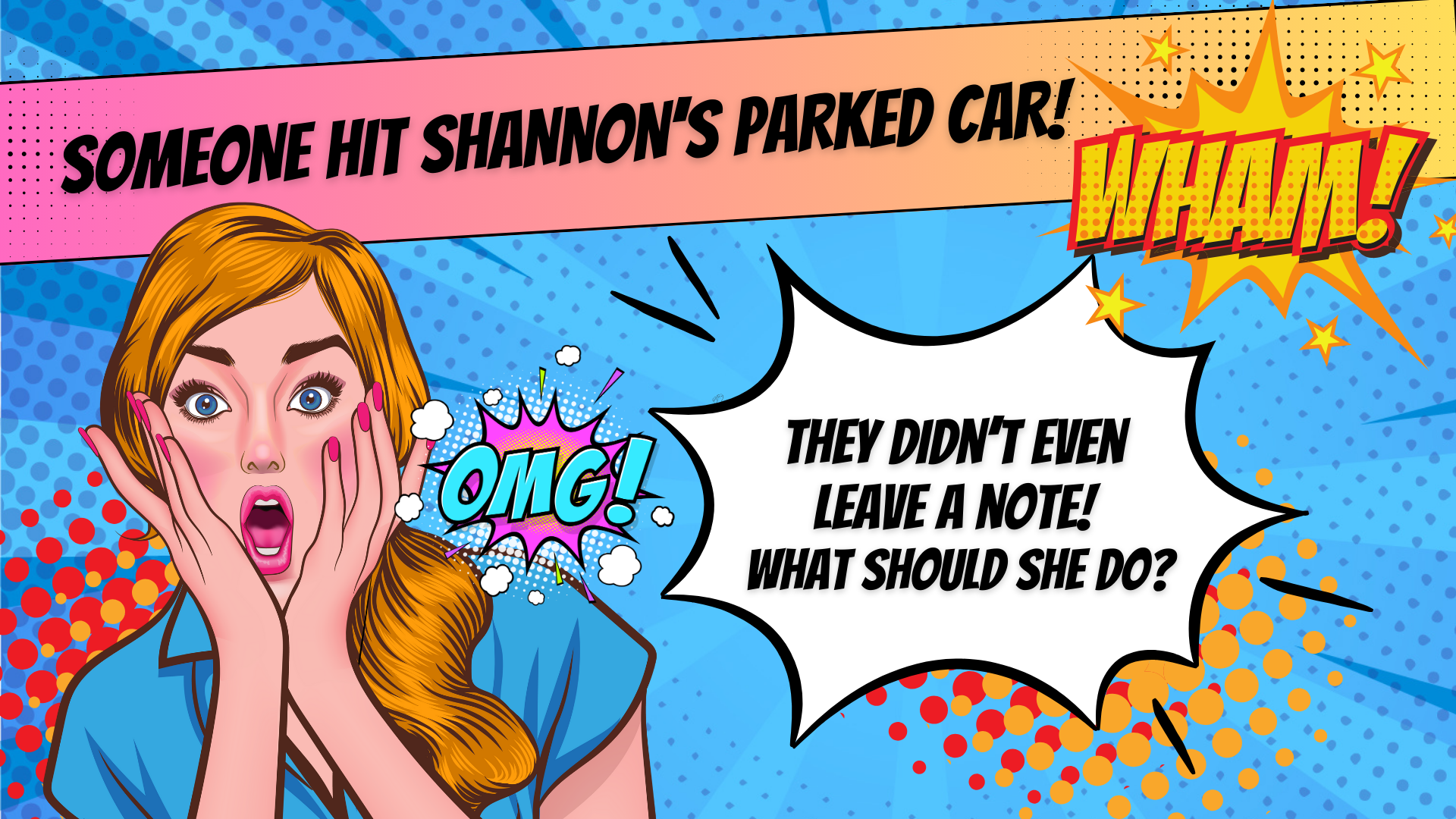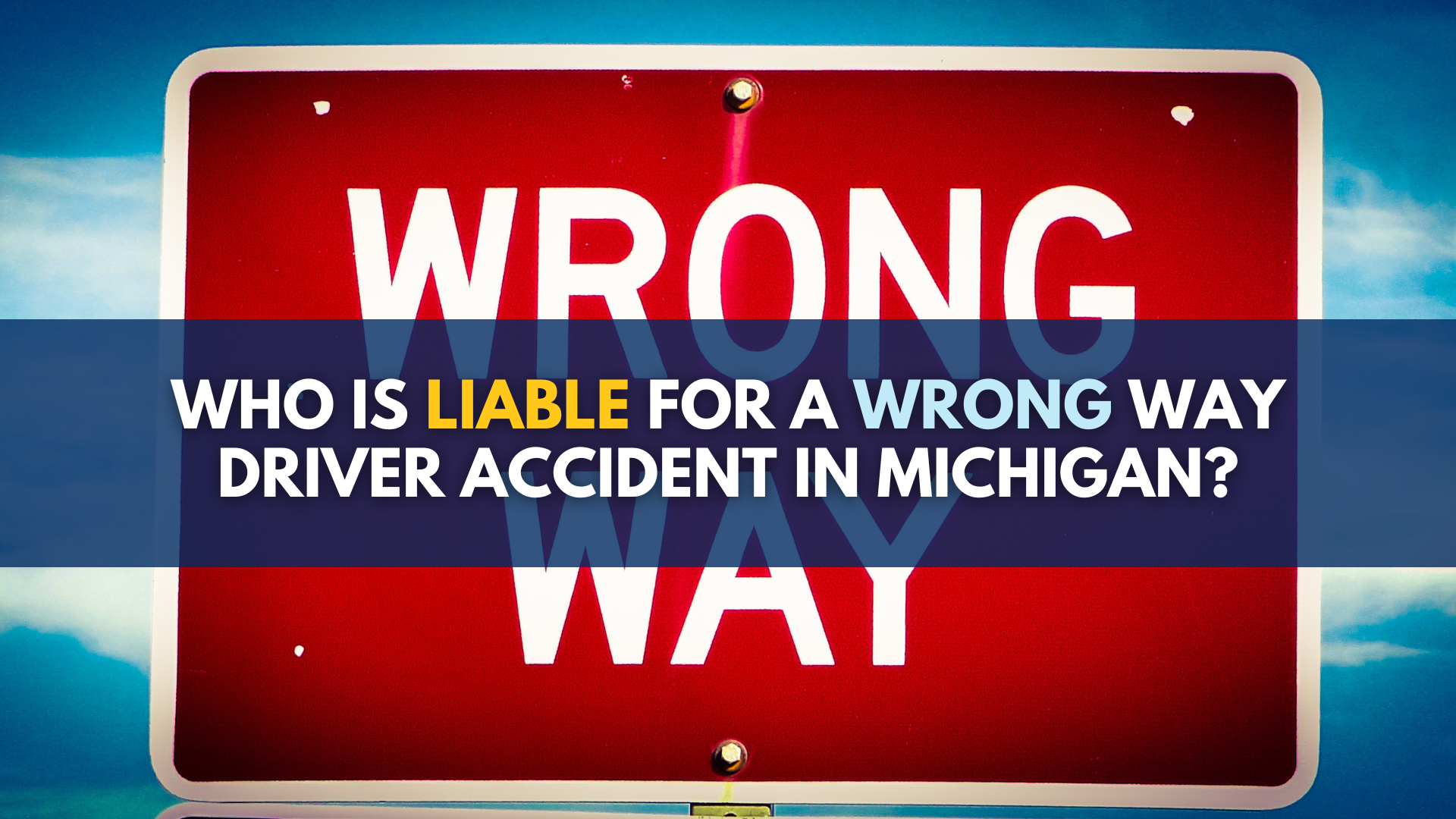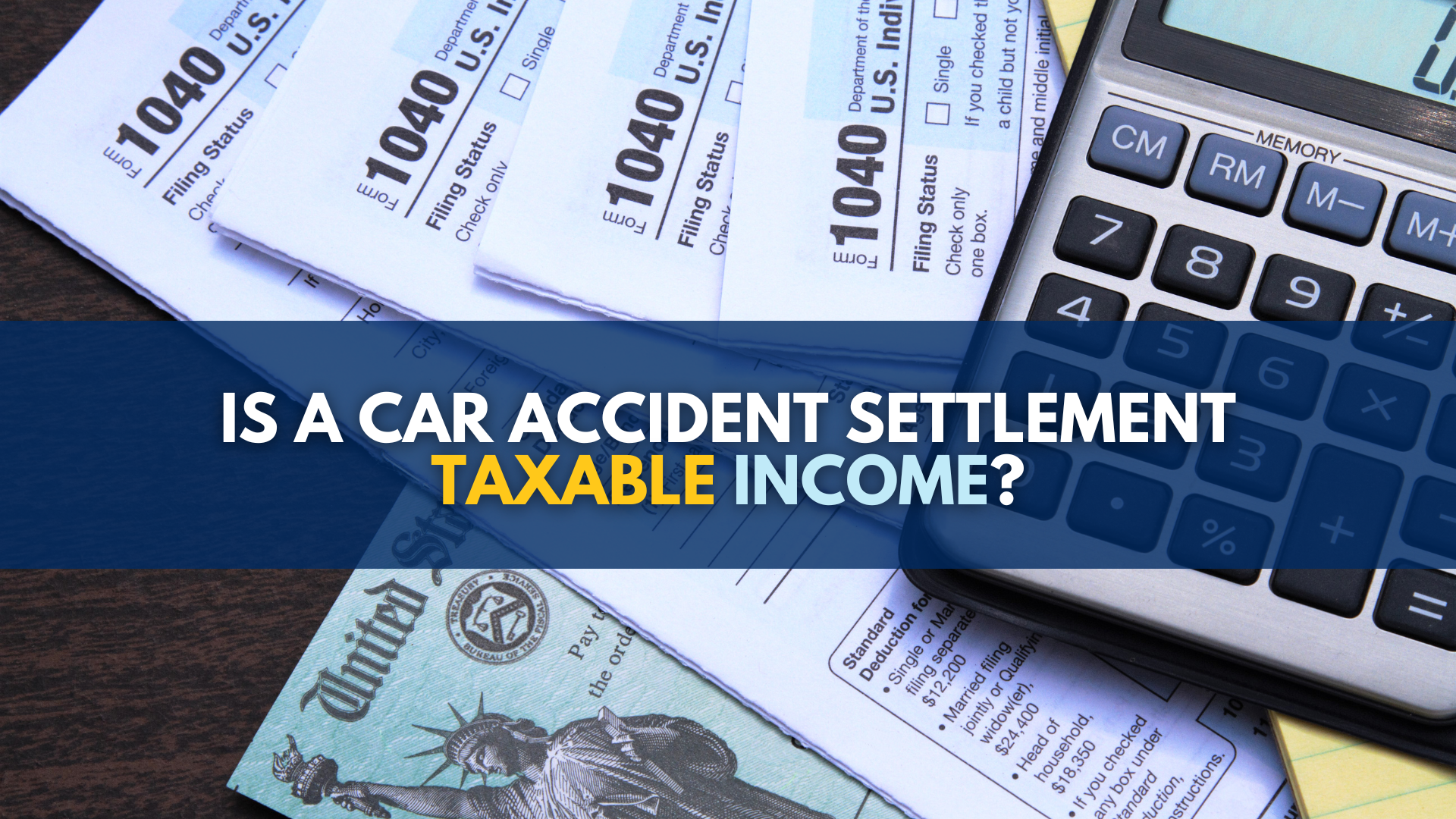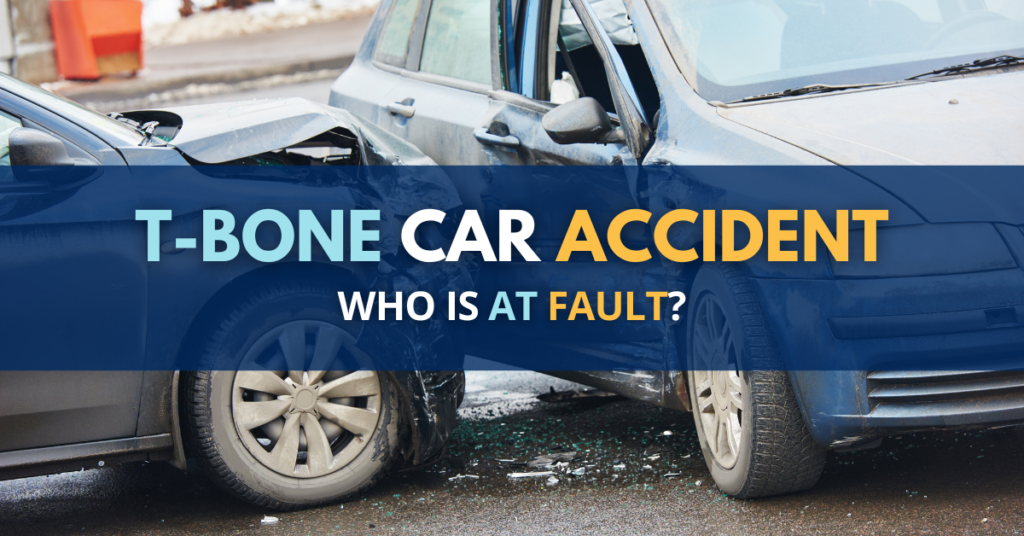
In Michigan, determining who is at fault in a T-Bone accident can be difficult to prove without a witness. Fault can be shown through evidence gathered at the car crash scene, including driver and witness statements, any videos or surveillance footage, and photos.
Newer cars with “black box” ECM or EDR data can also be downloaded to determine who caused the T-bone crash in Michigan. This evidence can also be used for determining who can be criminally charged and/or who can be sued in civil court for pain and suffering compensation.
What is a T-Bone accident?
A T-Bone accident is a car crash that occurs when the front end of one vehicle strikes the side of another vehicle at a perpendicular angle, causing the impact of the two vehicles to take the shape of the letter “T.” These types of crashes can be also referred to as a broadside, side-impact, or side collision.
In other words, this type of automobie crash vaguely resembles the shape of the bone in a T-bone or porterhouse steak, which is why lawyers, police investigators, insurance company claim adjusters, and others refer to these as “T bone” crashes.
Where do these type of crashes most commonly occur?
Most of these types of crashes commonly occur in the following locations: (1) four-way intersections; (2) arterial roads that connect to main thoroughfares; and (3) parking lots.
Who is at fault in a T-bone accident in Michigan?
In Michigan, the driver who is at fault in a T-bone accident is the driver who caused the car crash because he or she: (1) failed to use the ordinary care that a reasonably careful driver would use; and/or (2) violated state and/or local traffic laws. (Sources: M Civ JI 10.02; M Civ JI 12.01, 12.03 and 12.05)
Common driving behaviors of an at-fault driver in a T-bone crash
This type of crash frequently occurs when a driver of a car or truck: (1) runs a red light; (2) disregards a stop sign; (3) makes a left turn across oncoming traffic and a driver fails to yield the right of way; or (4) backs out of a parking space and he or she or the other driver is not paying attention.
Other driving behaviors that may point to who is at fault in a T-bone accident in Michigan include: (1) speeding; (2) texting while driving a car, truck or SUV; (3) distracted driving; (4) driving under the influence of alcohol and/or drugs; and (5) drowsy driving.
What evidence is considered to determine who is at fault in a T-bone accident in Michigan?
The following evidence gathered at the car crash scene will help to determine who is at fault in a T-bone accident in Michigan: (1) statements by drivers, passengers and witnesses; (2) opinions by accident reconstruction experts; (3) video recordings; and (4) data from black boxes or event data recorders (EDR) or engine control modules (ECM).
Common injuries after a T-bone crash
The most common injuries after a T-bone crash include: (1) traumatic brain injury; (2) spinal cord injuries to the back and neck; (3) herniated disc; (4) concussion; (5) damage to the shoulder; (6) PTSD; (7) catastrophic injuries; and (8) wrongful death.
Does my pain and suffering compensation depend on fault?
In Michigan, to sue for compensation for your pain and suffering after being injured in a crash, you are legally required to show that the other driver was at-fault in causing the crash.
Average settlement after a T-bone crash
In Michigan, there is no average settlement recorded for a T-bone crash. The insurance companies may keep track of this information, but there is no database that is available to the public. Your settlement amount will depend on the facts of your case and nature and extent of your injuries. It will also depend on the amount of medical bills that you have incurred over a No-Fault PIP cap, if there is one, and current and future economic losses. Finally, the experience and reputation of your lawyer is also considered by insurance companies and, depending on the insurance company, can increase a settlement amount of by up to 4x more than a personal injury lawyer or general practice attorney who does not have the same reputation and track record of verdicts and settlements.
No-Fault benefits don’t depend on fault
Under Michigan’s auto No-Fault law, you are legally entitled to benefits to cover your medical bills and lost wages (so long as you are a Michigan resident) regardless of who is at fault in the T-bone accident that resulted in your car crash related injuries. (MCL 500.3105(2))
To protect your right to recover No-Fault benefits after a T-bone car crash in Michigan, you must file an application for No-Fault benefits with the responsible auto insurance company within one (1) year after the crash. (MCL 500.3145(1) and (4))
It is important to file your application for No-Fault benefits on time because if you don’t, the auto insurance company will use this to deny your No-Fault PIP claim and refuse to pay any and all of the No-Fault benefits you would have otherwise been entitled to.
Fault for pain and suffering compensation after a T-bone accident
In Michigan, in order to sue for pain and suffering compensation after you were injured in a T-bone accident, you must prove the other driver was 50% or more at fault for causing the car crash. Fault may be shown by demonstrating the driver did not drive with the necessary care and/or did not comply with the traffic laws.
Compensation from the at-fault driver
Aside from the facts of your case and the track record and reputation of your auto accident attorney, one of the most important factors that will determine how much pain and suffering compensation you’ll be able to recover from the at-fault driver is how much liability insurance coverage he or she has.
Drivers in Michigan are required by law to carry $250,000/$500,000, but they have the option “to purchase lower limits” of $50,000 and $100,000. (MCL 500.3101(1); 500.3131(2); 500.3009(1)(a) and (b), (5))
However, if the at-fault vehicle that caused your T-bone crash is an Uber, Lyft, a semi truck or commercial vehicle, then the liability insurance coverage limits that apply to your case may be considerably higher.
Need legal help? Get answers from our attorneys now
If you have questions about who is at fault in a T-bone accident in Michigan, you can call Michigan Auto Law toll free anytime 24/7 at (800) 777-0028 for a free consultation with one of our experienced car crash attorneys. We will answer your questions about your legal rights to pain and suffering compensation, economic damages, auto No-Fault insurance PIP benefits, and settlements in cases like yours. There is absolutely no cost or obligation. You can also get help from an experienced injury attorney by visiting our contact page or by using the chat feature on our website.
